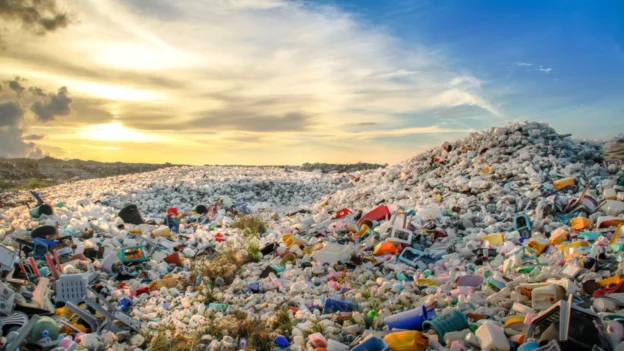Professor Shimadzu of analytical chemistry at the University of Texas at Arlington, is working on a method to improve plastics recycling, because although consumers make an effort to sort and separate recyclables, most plastic bottles still end up in landfills.
Standard recycling methods, which include sorting, shredding and reforming plastics, are mainly limited to types 1 and 2, i.e. soft drink bottles, water bottles and milk jugs, so this new method seeks the option of being able to recycle in quantity.
How to improve recycling rates?
Global plastic production, has increased significantly from 2 million tons in 1950 to 360 million tons in 2018. Approximately half of this plastic becomes litter after a single use. By 2050, an estimated 12 billion tons of plastic waste will be accumulated in the environment and in landfills.
In an effort to improve recycling rates, Kevin Schug, Shimadzu Distinguished Professor of Analytical Chemistry at the University of Texas at Arlington, is developing new methods for separating and recycle mixed plastics mixed plastics. Schug and a team of graduate and undergraduate researchers at UTA have collaborated on a study published in Journal of Chromatography A.
A prominent chemical recycling approach is pyrolysis pyrolysis according to Schug. This process involves heating plastics in an oxygen-free environment until they break down into pyrolysis oils, which share many characteristics with crude oil, albeit with some differences. These oils can be further refined into fuels or chemical feedstocks for the manufacture of new plastics.
How does the pyrolysis method work?
Unlike traditional recycling, which requires sorting and shredding before recycling the material, pyrolysis is not restricted to specific types of plastic and can process all. However, pyrolysis of mixed plastic waste generates complex mixtures that manufacturers must analyze in detail.
Contaminants such as sulfur and nitrogen can generate chemical compounds that complicate downstream processing strategies.
Pyrolysis has also gained importance and many companies are expanding their chemical recycling operations, according to Schug. However, the characterization of pyrolysis oils requires the development of new analytical methods, such as the one described in their recent peer-reviewed research.
With the support of Jean-Francois Borny of Lummus Technologies LLCa Houston-based chemical company, Schug and his UTA colleagues (graduate students Alexander Kaplitz and Niray Bhakta, and undergraduate researchers Shane Marshall and Sadid Morshed) developed a new supercritical fluid chromatography method that can separate pyrolysis oils. They found that they could clearly differentiate oils produced from polyethylene and polypropylene feedstocks.
Importance of plastics recycling
According to Schug, this is just the beginning, but they are very excited about the potential of this technique to distinguish oils produced from various plastics and blends. Finding a more efficient way to recycle these plastics could reduce dependence on fossil fuels and hopefully help mitigate climate change.
In addition to the development of advanced recycling methods such as pyrolysis, it is crucial to promote education and awareness of the reduction of plastic use and the importance of proper recycling at source. Government policies and collaboration between industry and consumers play a vital role in creating a more sustainable waste management system.
Follow us on social networks and don’t miss any of our publications!
Inspenet.com YouTube LinkedIn Facebook Instagram X
Source: phys
Photo: Shutterstock

